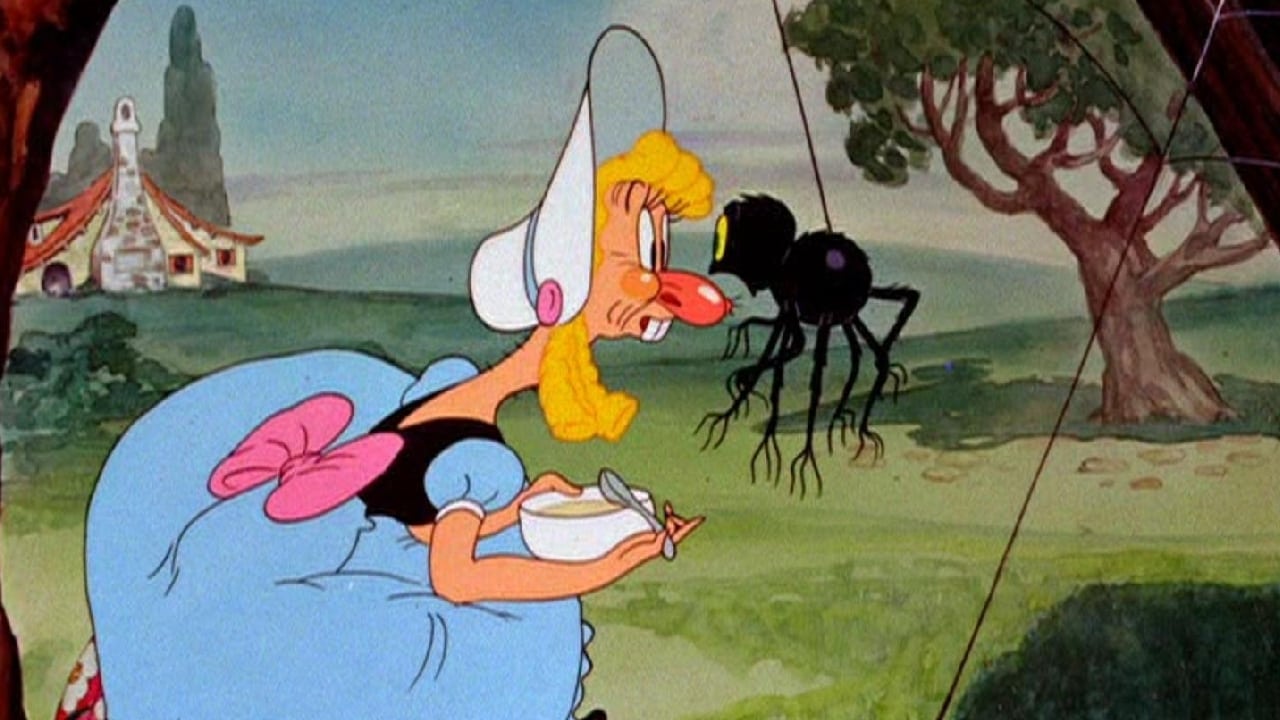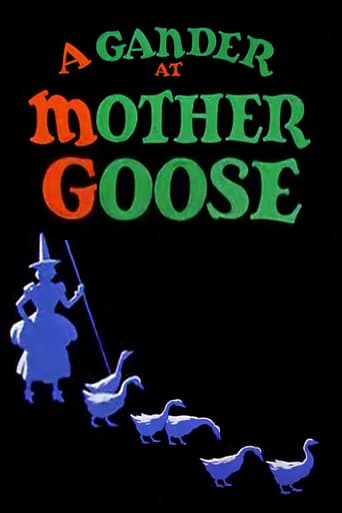

What makes it different from others?
... View MoreA Disappointing Continuation
... View MoreThere is, somehow, an interesting story here, as well as some good acting. There are also some good scenes
... View MoreIf you're interested in the topic at hand, you should just watch it and judge yourself because the reviews have gone very biased by people that didn't even watch it and just hate (or love) the creator. I liked it, it was well written, narrated, and directed and it was about a topic that interests me.
... View More. . . or an Anti-Broads Tirade. Among the notable rears exposed during A GANDER AT MOTHER GOOSE are Humpty Dumpty's bare buns (mooning viewers after his "great fall"), Jack-Be-Nimble's flaming posterior, and America's Guardian Bald Eagle, who pulls Hiawatha's arrow from his bottom. On the other hand, Mistress Mary displays an ugly attitude toward agriculture, Snottily Proclaiming that gardening "stinks;" Jill seems to be a total tart, leaving Jack covered with hickeys on the hill; Miss Muffet has enough facial deformities to scare her spider away; and the morbidly obese but not-so-old Lady Living in a Shoe seems to be the not-so-bright sex slave of a particularly lazy yet very fertile skinny bald guy. It's all enough to give the Big Bad Wolf bad breath. This early example of on-screen, mid-story Product Placement (for Listerine) leaves one wondering how much GANDER GOOSE producer Leon Schlesinger may have pocketed here in the form of Payola.
... View More"A Gander at Mother Goose" is a 6-minute short film from over 75 years ago and there is no denying how amazing the animation is. Tough to believe that this is from the early 1940s, actually from World War II, but there are no real political references in here as the USA weren't participating actively at that time yet. This film is evidence that these really were the years of the Golden Age of Animation. Unfortunately, the story and comedy is not really on par here. It is basically a collection of very short nursery rhymes (half a minute perhaps), but apart from the wolf with the smelly breath none of them are really funny and all rely on one funny final moment, which basically makes the entire thing very forgettable if this one isn't working. I personally do not recommend the watch. Even for Avery and Blanc, not everyone can be a winner.
... View MoreFairy tales were often used as the basis for cartoons in the days of yore. Warner Bros. cartoons usually twisted them into jokes, with Friz Freleng's "Three Little Bops" ("Three Little Pigs" as a jazz song) as the crowning achievement. An earlier effort was Tex Avery's "A Gander at Mother Goose". This was one of many cartoons from the era using children's stories and nursery rhymes as excuses for spot gags. This was not the best one. I personally think that Tex worked best when focusing on an elaborate plot - as was the case with "The Isle of Pingo Pongo" and "Thugs with Dirty Mugs" - so that he could create neater gags.Still, this one isn't bad. Aside from getting to see more of Humpty Dumpty than we expect (they actually got it past the censors!), we can probably guess what Jack and Jill are really doing! Of course, about two months later, Tex brought to the silver screen "A Wild Hare", introducing Bugs Bunny in his first true form. So this one works mostly as a place holder. OK, not great.
... View MoreThis is a cartoon that was made in a format Tex Avery wasn't always successful with-a series of loosely connected blackouts, which are little comic set-pieces. Avery didn't always do these well because each distinct piece had its own setup, joke and punchline, usually requiring more dialogue and a slower pace than Avery liked to use. This one works better than others he did because the gags are funnier and there are some sight gags here that have Avery written all over them (in Humpty Dumpty and Jack Be Nimble particularly) and the pacing is a little better. As I said, this type didn't really suit Avery very well. One sub-class of this type Avery did have success with, though, and it was the travelogue cartoons, I suspect because they were parodies of the often mind-numbingly bland and sophorific travelogues that were popular in the 1930s and 1940s, thus making them sitting ducks for the antic lunacy that was Avery's long suit. Decent, but not up to his better work. Worth watching once. Recommended for Tex Avery die-hard fans (like me).
... View More